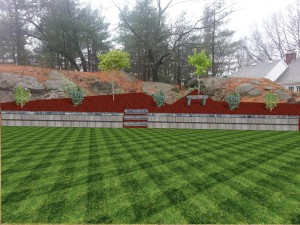Sometimes, caring for your lawn can be frustrating. You believe you’re doing all the right things to care for your grass, yet suddenly brown patches begin appearing out of nowhere! In this post we’ll outline some common causes for brown patches in your lawn and advice on how to remedy them.
Human Error
You may be damaging your lawn by trying to care for it:
- Check your mower blade: You may have your mower blade set too low for your type of grass. The correct mowing height will depend on the type of grass and the season. Check your yard conditions to be sure your mower blade is set to the proper height. Mower blades should be sharpened each fall and spring to allow for a clean cut. Dull blades tear the grass which can lead to damage and gradual death of your lawn.
- Chemical application: Be sure to apply fertilizers evenly and properly. Incorrect use of fertilizers will burn your lawn causing dead spots. Keep in mind that herbicides and pesticides can cause damage to grass as well. Avoid applying insect repellants on your lawn directly.
Unhealthy Growing Conditions
Familiarize yourself with areas of your yard that may be hindering your lawn’s growth:
- Soil quality: Healthy soil allows for healthy lawns and poor soil can exist in patches that make grass difficult to grow. Use a screwdriver to push into the soil. If you have trouble puncturing the ground your soil is too compact. Plan on aerating your lawn in the spring and fall and consider adding top-soil to improve soil quality.
- Trees: Trees and grass don’t always play nice together. Tree roots compete with lawns for water and nutrients and usually win. Leaves and other debris that fall from tree tops can alter the pH of the soil which also makes it difficult for your lawn to stay green. Mulching under trees and shrubs can help to keep grass and trees living harmoniously.
- Water run-off: Areas of your yard may slope in order to allow for proper irrigation. These water run-off areas can cause erosion to the soil and carry new growth with it. Consider creating natural water catches in your landscape to prevent water run-off and erosion.
Lawn Diseases and Pests:
Your lawn may have a more serious or complicated issue to be diagnosed before you can have a healthy lawn again:
- Thatch: Thatch is organic matter, mostly stems and roots, that hasn’t fully decomposed. Small amounts of thatch can be good for your lawn. However, when thatch build-up becomes excessive it can choke the healthy grass and cause disease and decay. Thatch that is over 1/2 inch thick should be removed.
- Grubs: These common lawn pests thrive in mid to late summer and feed on healthy lawns. If you can pull back parts of your sod easily like carpet and notice thick, white worms, you have a grub infestation. Grub control products will need to be applied.
- Fungus: Moist conditions in late summer or early spring may cause fungal disease that shows up as circular or irregular brown patches in your lawn. Consider contacting a professional to assist in identifying the type of fungal disease and how best to treat.
If you need assitance in identifying the common causes of brown patches in your lawn, please feel free to contact us at (781) 431-2338, or you can reach us direct through our website. As always, we can provide you with a free estimate for any of your landscaping needs.


Sorry, comments are closed for this post.